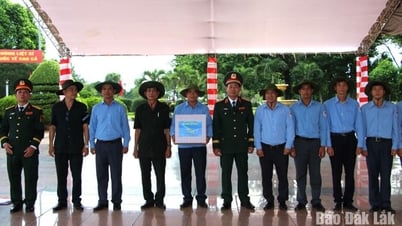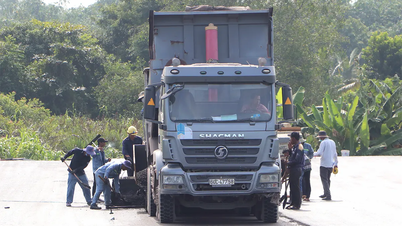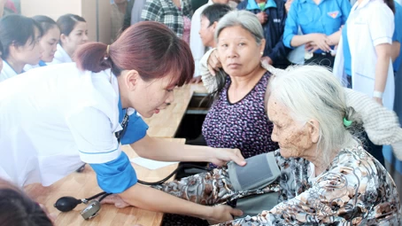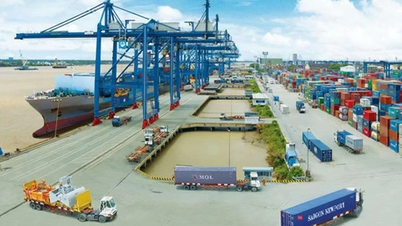08:43, 09/10/2023
In the bustling atmosphere of the new school year, public opinion points out that here and there, in large cities, the problem of lack of, overloadededucational infrastructure, and insufficient schools is still happening. Should this be a story that needs immediate attention in new urban development investment projects?
Too many houses, not enough schools
The reality recorded in many large-scale urban development and investment projects in Ho Chi Minh City, Hanoi , Da Nang, etc. is that even when the technical infrastructure is completed and the commercialization phase is organized vigorously, investors are still confused and cannot explain why the requirements for education and people's livelihood items have not been implemented. This consequence leads to a series of congestion and difficulties for the lives of residents in new urban areas.
Mr. Cao Quang S., a resident of the new urban area on Nguyen Xien Street (Hanoi) shared that his family moved to an apartment bought in this urban project more than 4 years ago. When looking at the initial design, he and his wife were very happy to see that all the commercial infrastructure, office complexes, schools, and medical stations were arranged, promising that one day in the near future his children would not have to jostle to go to school far away, and their family's shopping activities would be compact and close to home. However, this year's school opening season, he and his wife still had to take turns taking their two children to two schools more than ten kilometers away. Simply because the urban area has been put into commercial housing exploitation, but the school project has not been built yet.
 |
| Students of Doan Thi Diem Secondary School (Buon Ma Thuot City) attend the Opening Ceremony of the 2023 - 2024 school year. Photo: Thanh Huong |
Some parents in high-rise projects in diplomatic and defense areas (Xuan Tao, Bac Tu Liem, Hanoi) also said that they have moved into apartments here for several years, but there are no schools so they have to send their children to school very far away. The schools around these areas that accept students also take hours to travel. In the near future, some schools are expected to move to the Hoa Lac area, forcing students to take the bus nearly 40 km. All parents complain, but there is no way to change because the urban area where they live does not have a school that meets the desired standards.
Stories of urban areas with hundreds of surplus apartments but a serious lack of educational infrastructure are not uncommon in Hanoi or Ho Chi Minh City. Even in Da Nang, a city highly regarded for its urban infrastructure, many new urban projects have been found to not pay attention to the issue of schools for residents' children. In some urban areas located on the outskirts of Da Nang, parents have to take their children a dozen kilometers to the center every day to study.
There are many explanations and justifications from investors and functional management agencies about this lack of schools, and the further into the new school year, the more acute the problem becomes. But all of them cannot explain why the requirements for educational infrastructure are often overlooked, and the situation of excess housing and lack of schools in new urban investment projects in big cities is obvious and undeniable.
What vision for Buon Ma Thuot?
Putting this educational infrastructure story to Buon Ma Thuot City, it can be said that this is a requirement that must be monitored and persistently organized. Basically, up to now, most of the city's central wards do not have the phenomenon of student overload at all levels, such educational infrastructure is not a problem. However, in the suburbs and especially in new urban development areas, the planning of new urban development still has to face the challenge of lacking educational infrastructure.
The direction of urban infrastructure expansion of Buon Ma Thuot is very clear, can be seen in each planning and local planning zoning. The city not only wants to create a settlement for local people, but also has to calculate the plan for mechanical population development, attract more residents from other localities, and anticipate future economic growth opportunities.
The good news is that in recent years, with the orientation of urbanization transformation, Dak Lak construction industry has paid close attention to urban planning requirements associated with infrastructure development criteria. In areas planned for renovation or new urban investment, the locality requires investors not only to properly and adequately implement technical infrastructure, but also to immediately construct residential and community items, in which education is an important criterion. New urban projects in Buon Ma Thuot have clearly set the requirement to complete and synchronize residential and community infrastructure items, paying attention to culture and education, then the investment completion progress can be assessed for commercialization. This allows project investors to have more practical and responsible plans for future urban residents, before they sign housing purchase contracts.
What is worth noting, according to the investors and the authorities of the communes and wards, is that in order to truly stimulate such efforts to complete urban infrastructure, urban and renovation projects are in great need of the Dak Lak provincial government to pay attention and apply more supportive and active policies for investors. How can the steps of examination, supervision, planning and design... and administrative and legal procedures in the projects be more transparent and active, to invite investors to enhance their responsibility to complete educational infrastructure aspects, for the long-term stability of new urban projects. Buon Ma Thuot, accordingly, will truly be a dynamic and effective city for increasingly better urban development visions.
Nguyen Duc
Source




![[Photo] Vietnamese and Hungarian leaders attend the opening of the exhibition by photographer Bozoky Dezso](https://vphoto.vietnam.vn/thumb/1200x675/vietnam/resource/IMAGE/2025/5/28/b478be84f13042aebc74e077c4756e4b)
![[Photo] Prime Minister Pham Minh Chinh receives a bipartisan delegation of US House of Representatives](https://vphoto.vietnam.vn/thumb/1200x675/vietnam/resource/IMAGE/2025/5/28/468e61546b664d3f98dc75f6a3c2c880)
![[Photo] 12th grade students say goodbye at the closing ceremony, preparing to embark on a new journey](https://vphoto.vietnam.vn/thumb/1200x675/vietnam/resource/IMAGE/2025/5/28/42ac3d300d214e7b8db4a03feeed3f6a)
![[Photo] General Secretary To Lam works with the Central Policy and Strategy Committee](https://vphoto.vietnam.vn/thumb/1200x675/vietnam/resource/IMAGE/2025/5/28/7b31a656d8a148d4b7e7ca66463a6894)
























































































Comment (0)